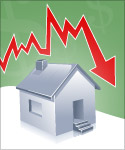 If there’s one thing that Morgan Stanley would like to advise to you, it’s to take a look at single-family homes and consider it as part of your real estate investing strategy.
If there’s one thing that Morgan Stanley would like to advise to you, it’s to take a look at single-family homes and consider it as part of your real estate investing strategy.
That’s right, these properties have become hot among real estate investors recently considering the shift in the US property market from home ownership to rentals (or as Morgan Stanley puts it, a “renter-heavy society”). It’s exactly the new real estate paradigm! Even Bank of America and the Federal Housing Finance Agency have sought measures to reduce the impact of mortgage delinquency by working on an REO rental program for its underwater borrowers.
Above all, what would interest you whether you’re a newbie or an experienced real estate investor is Morgan Stanley’s findings that single-family homes, when turned into rental properties, have low correlation to other widely invested assets. In other words, the comparable assets in their study do not move in the same way as single-family properties and as such, single-family homes have higher returns. Considering average annualized returns on a three-month T-Bill at 3.5 percent, 10-year T-Bill at 7.5 percent and the National Council for Real Estate Investment Fiduciaries (NCREIF) Property Index at 7.0 percent, single-family homes can yield an impressive 8.1 percent return.
Morgan Stanley also emphasizes single-family homes’ inflation hedge that favors landlords instead of letting them own and occupy the house. In a market where there’s rental surge, you should expect to have healthy cash flow on your real estate investment with the rent covering your mortgage and other expenses such as real estate taxes and insurance, property upkeep, and even vacancy costs (while you’re waiting for a tenant). There’s also the possibility of equity growth in the future.
However, the financial services firm warns its investors that the biggest risk associated with single-family homes is its illiquidity, even if they may be better than other commercial real estate assets since there are about six million homes of this type that are traded annually. I do acknowledge this asset class’ unreadily saleable nature considering that the market has also been biased against illiquidity in terms of financial calculations. Nevertheless, long-term real estate investment goals for such an asset can be offset because the risk is spread out over the property’s holding period (For a thorough discussion of this observation, refer to Lin and Vandell’s paper).
With prices of homes at record lows, isn’t it the perfect time to think about investing in single-family real estate?




